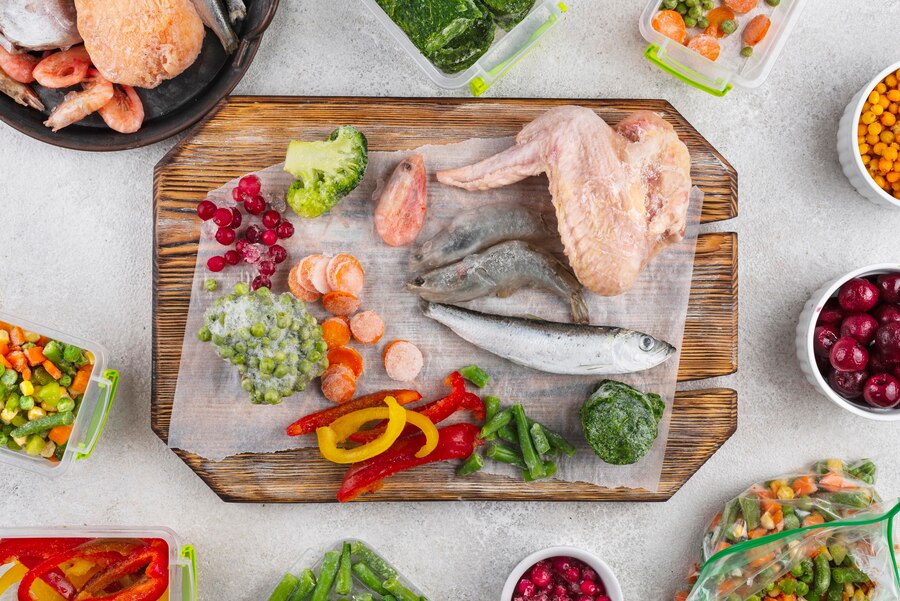Fish fillets are a versatile and convenient seafood option, offering a healthy and delicious base for countless dishes. Their popularity stems from their ease of preparation, having already been cleaned, deboned, and portioned, ready for the pan or oven. But beyond their culinary appeal, fish fillets offer a fascinating journey from the ocean’s depths to our plates.
Understanding the world of fish fillets involves delving into various aspects, from the different types and their origins to the various factors that influence fish fillets prices. This article will serve as your guide, uncovering the secrets of this delicious and nutritious food source.
A Variety Of Flavors And Textures

Fish fillets come in a dazzling array of varieties, each boasting unique flavors, textures, and nutritional profiles. Some of the most popular choices include:
- Salmon: Renowned for its rich, oily texture and vibrant pink hue, salmon fillets are a versatile option for grilling, baking, or pan-frying. They are also an excellent source of omega-3 fatty acids, crucial for heart health.
- Cod: This mild-flavored white fish offers a firm texture and versatility in cooking methods. Cod fillets are perfect for fish and chips, baking with herbs and lemon, or incorporating creamy sauces.
- Tilapia: A light and flaky fish, tilapia is a budget-friendly option with a delicate flavor. It absorbs marinade well, making it ideal for experimentation with various spices and herbs.
- Dory: This white fish boasts a firm texture and a slightly sweet flavor. Dory fillets are often used in fish tacos, baked en papillote, or served with a simple lemon butter sauce.
- Snapper: This firm-fleshed fish features a sweet and delicate flavor. Snapper fillets shine on the grill or baked with fresh herbs and vegetables.
Exploring Different Origins
The origin of a fish fillet can significantly impact its flavor, texture, and even price. Here’s a brief overview of some prominent fishing regions:
- Atlantic Ocean: This vast body of water provides popular species like cod, salmon, and haddock.
- Pacific Ocean: A haven for tuna, mahi-mahi, and numerous other flavorful fish.
- Mediterranean Sea: Renowned for its abundance of sea bass, dorada, and branzino.
- South China Sea: Offers a diverse range of fish, including tilapia, grouper, and bream.
Unveiling The Factors Affecting Fish Fillet Prices

Understanding the various factors influencing fish fillet prices allows for informed decision-making. Here are some key considerations:
- Species: Certain types like salmon and tuna generally command higher prices due to their popularity and demand.
- Fishing method: Sustainable practices like line-caught or wild-caught fish often carry a premium compared to farmed fish.
- Freshness: The fresher the fish, the greater the price, as it ensures optimal flavour and quality.
- Processing: Filleting and packaging processes can add to the cost of the final product.
- Seasonality: Some fish are available year-round, while others have specific peak seasons, impacting prices.
What To Look Out For When Procuring Fish?
When you are procuring fish fillets from the market, be it for regular use of special domestic occasions, you have to be mindful of some of the important points. It helps you understand your requirements. The following guide can help you get the best fish fillet from the store.
Firstly, you must get the fresh fishy smell when you walk into the store. It is one of the main indications for getting the best fish from the store.
Secondly, look that the fish is on the ice and the ice is clean. You must take a look at the elements that have a direct relationship with the hygiene and taste of the fish. The fillets must look firm and not rugged.
Rugged marks on the fish indicate that they are mishandled. Also, try to learn when the fish is frozen. This way, you could understand your needs and requirements. It is one of the ways to get fresh fillets.
You can also get an idea of the freshness of the fish by giving a good look at the different body parts. Fishes with a shiny surface and also slime on the surface is one indication that it is fresh fish. The fins of the fish must be clearly defined. It is one of the hallmarks of getting fresh fish. Moreover, getting the best quality is undoubtedly one of the hallmarks of great taste. Hence, you have to understand it here to better understand it.
Maintaining The Quality Fish Back Home

It might be that you procured fresh fish from the store. But that does not imply, you are consuming it that very day. So you must preserve it well in your home when buying the best fish. Here, we discuss some ways you can maintain the high quality of the fish by storing them back in your home.
Once you have made your purchase, you must ensure that you give the fish the ice it requires. You can take containers with ice. After buying them from the freezer, you can offer them freshness. Whenever the fish is brought out from the ice, it starts degrading.
Store your fish in the coldest parts of your freeze. It is one of the ways to keep your fish fresh for a longer time. You can also use the salt to preserve the freshness of the freezer for a couple of days before eating. However, you must try to use your fish fillets as soon as you buy them from the store. It is the best way to consume them. It’s simple… eat the fish when it is fresh.
Sustainability And Ethical Considerations
As with any food choice, it’s crucial to consider the environmental and ethical implications of our seafood consumption. Opting for sustainably sourced fish fillets, certified by organizations like the Marine Stewardship Council, ensures a healthy ocean for future generations.
Conclusion
Fish fillets are a delicious and convenient way to incorporate seafood into our diet. By understanding the diverse varieties, their origins, and the factors influencing their prices, we can make informed choices while enjoying the bounty of the sea. Remember to prioritize sustainability and ethical practices to ensure a healthy and vibrant ocean for years.
Read Also:























All Comments
Gluco Relief reviews google
Good post! We will be linking to this particularly great post on our site. Keep up the great writing